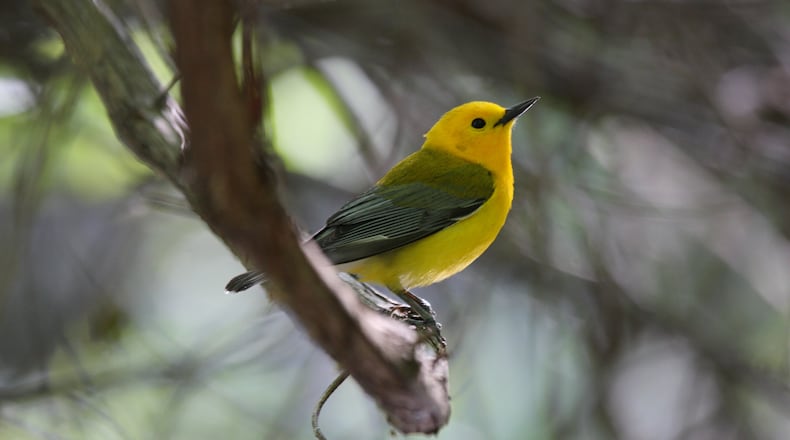Now arriving in Georgia from winter homes in Latin America are waves of Neotropical songbirds — vireos, flycatchers, orioles, grosbeaks, buntings, tanagers, thrushes and more. Bird-watchers will be out in full force between now and late May to see and hear these colorful, melodious migrants.
But exerting a special pull on birders will be another group of migrating songbirds, the warblers, whose striking colors make them the little jewels of spring. Probably no other group of migratory songbirds draws birders in spring as do the dazzling, energetic little warblers.
During the next few weeks, more than 30 warbler species will pass through Georgia. Some, such as the blue-colored cerulean warbler, are coming from wintering grounds as far south as Peru. More than 20 species will nest in Georgia, but others will stop only for a few days to rest and refuel before flying on to breeding grounds as far north as Manitoba and Labrador.
One of their favorite stopovers in Georgia is Kennesaw Mountain in Cobb County, where some 20 or more warbler species may be seen during a single day in April.
Some warblers that nest in Georgia are the prothonotary, Swainson’s, hooded, worm-eating, cerulean, black and white, Blackburnian, prairie, yellow-throated and yellow warblers; ovenbird; American redstart; Northern parula; and Louisiana water thrush. The pine warbler is the only warbler that resides in the state year-round. (Yellow-rumped, orange crowned and palm warblers spend the winter in Georgia and fly to breeding grounds up north in spring.)
The warblers’ myriad colors — patches of yellow, blue, red, orange, olive green, often bordered by black and white stripes — are the main reasons that birders are drawn to the little birds. A very colorful one is the bright yellow prothonotary warbler, so-named because its plumage resembled the yellow hoods worn by prothonotaries, high-ranking clerics in the Catholic Church.
Warblers, which primarily eat insects, are of great ecological importance. As they move north in spring, they gobble up tons of insects, especially caterpillars, that, if left unchecked, would devastate emerging spring foliage.
IN THE SKY: From David Dundee, Tellus Science Museum astronomer: The moon will be first quarter on Monday. Mars and Saturn are in the east just before sunrise. Jupiter is low in the west just after dark.
Charles Seabrook can be reached at charles.seabrook@yahoo.com.
About the Author
Keep Reading
The Latest
Featured

